| Mt. Lemon In April 2010, Fred was on one of his month-long trips around the country. I flew down to tucson and he picked me up at the airport. We had scheduled two nights of observing and imaging with Adam Block atop Mt. Lemmon. We had all afternoon before we had to head up the mountain, so we headed south toward Nogales, had a some mexican for lunch and the wandered over to the Titan Missile Museum. |
Mt.
Lemon The museum is located at the last remaining Titan Missile silo in the southwest. Originally, there were a few dozen of them scattered around the region. Fred standing with part of a guidance package. |
Mt.
Lemon Here is one of the nose cones. Inside, with this version, I think they could fit three nuclear warheads (MIRVs). The cone would depart the missile at a predetermined altitude, giving the three warheads enough time to split off and reach three different targets. |
 |
 |
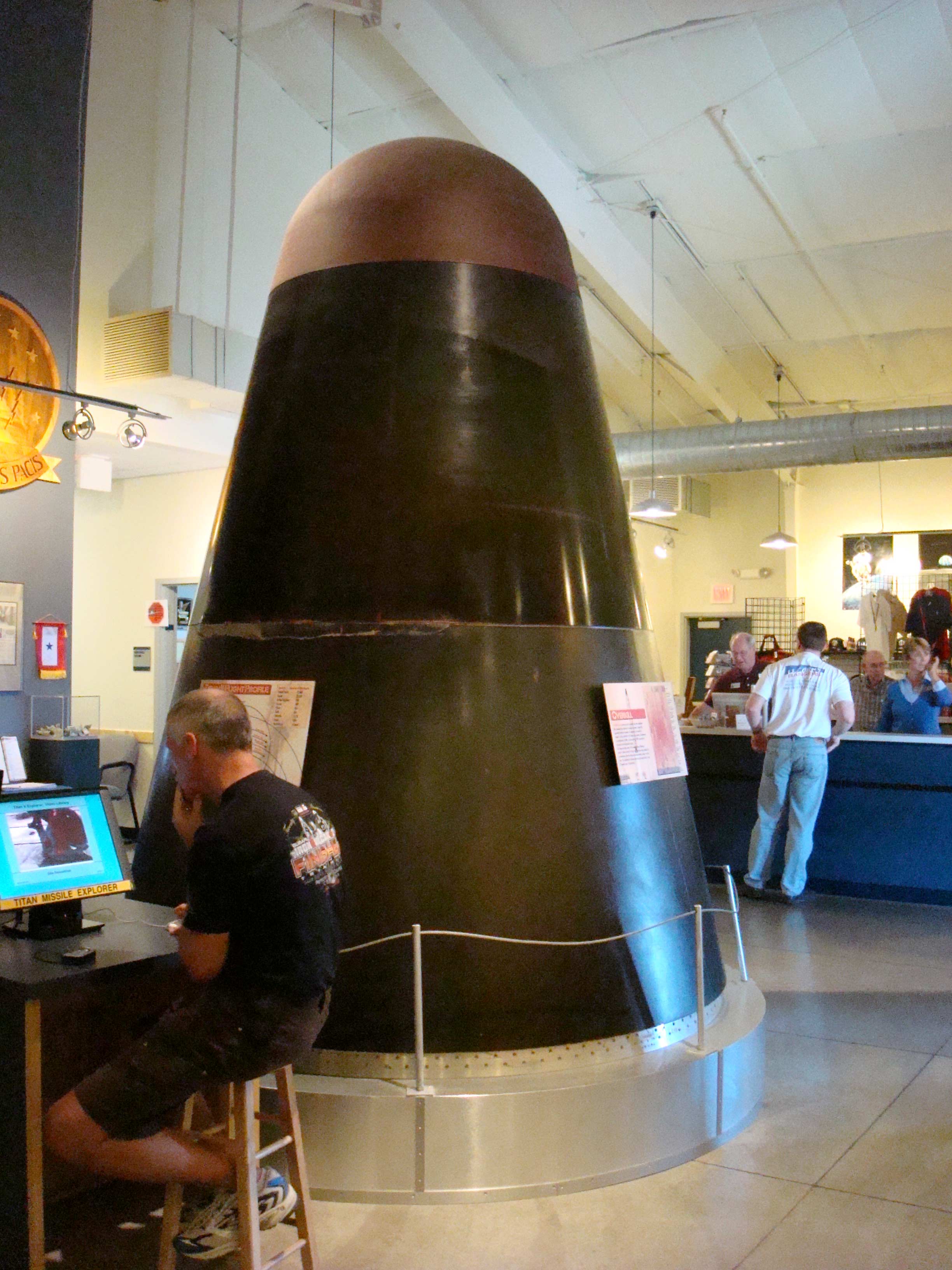 |
| Mt.
Lemon The guided tour starts with a short presentaion in a small theater. From there we don our hard hats and take a stroll through the compound. You wouldn't know it, but there is a small community built 4-5 stories right below. Here are a couple of the missile engines. A valve would open and two different compounds would mix in a mixing chamber and, BOOM, comes a whole lot of thrust. |
Mt.
Lemon The exhaust cones look to be about 5 feet in diameter. Carol and I were just out at Cape Canaveral last summer (2014) and the difference in the size of these engines compared to those of the Saturn V (Apollo Program) was stunning. The engine exhaust on the Saturn V looked to be around 50-60 feet in diameter. |
Mt.
Lemon Another nose cone. |
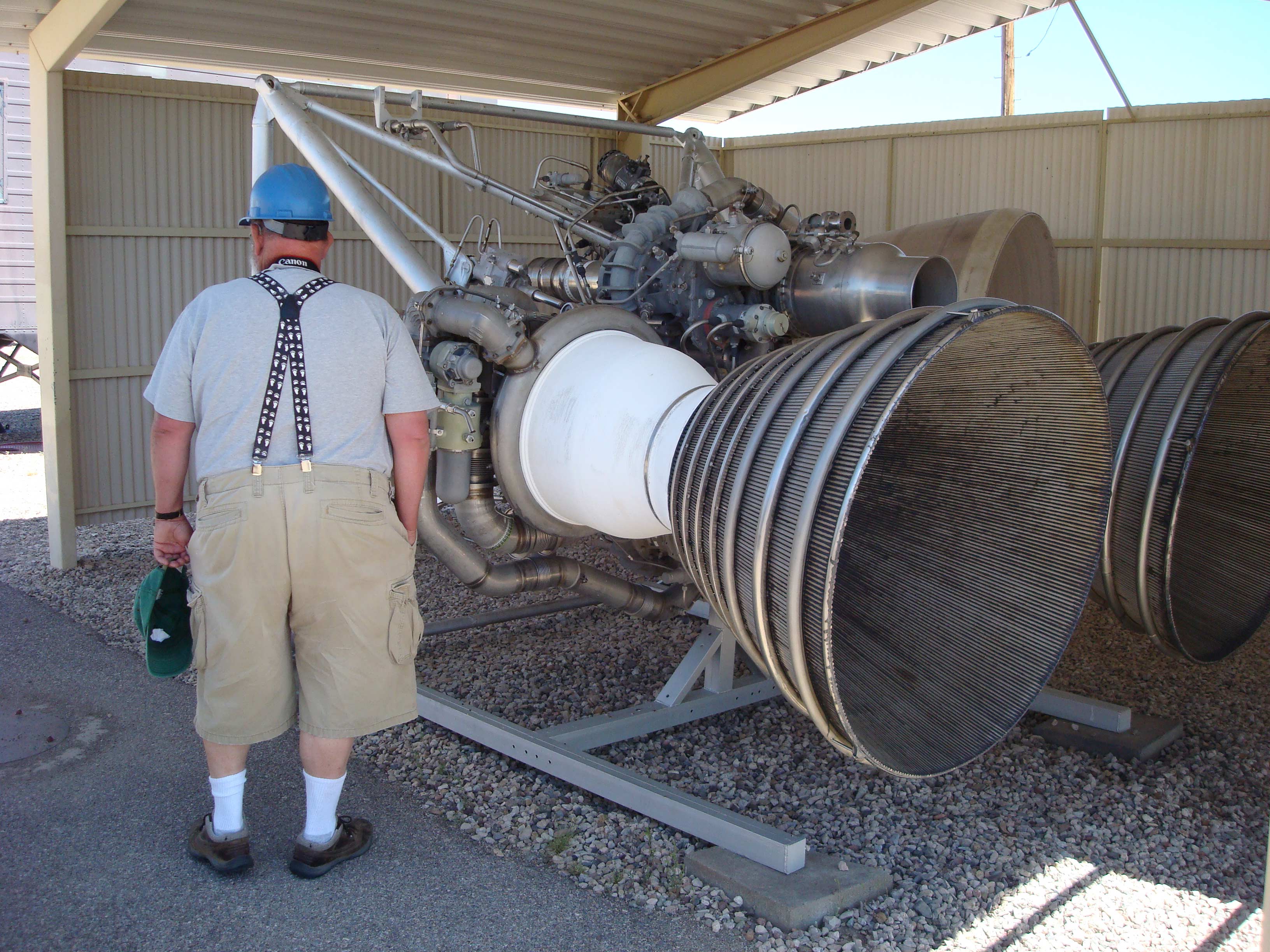 |
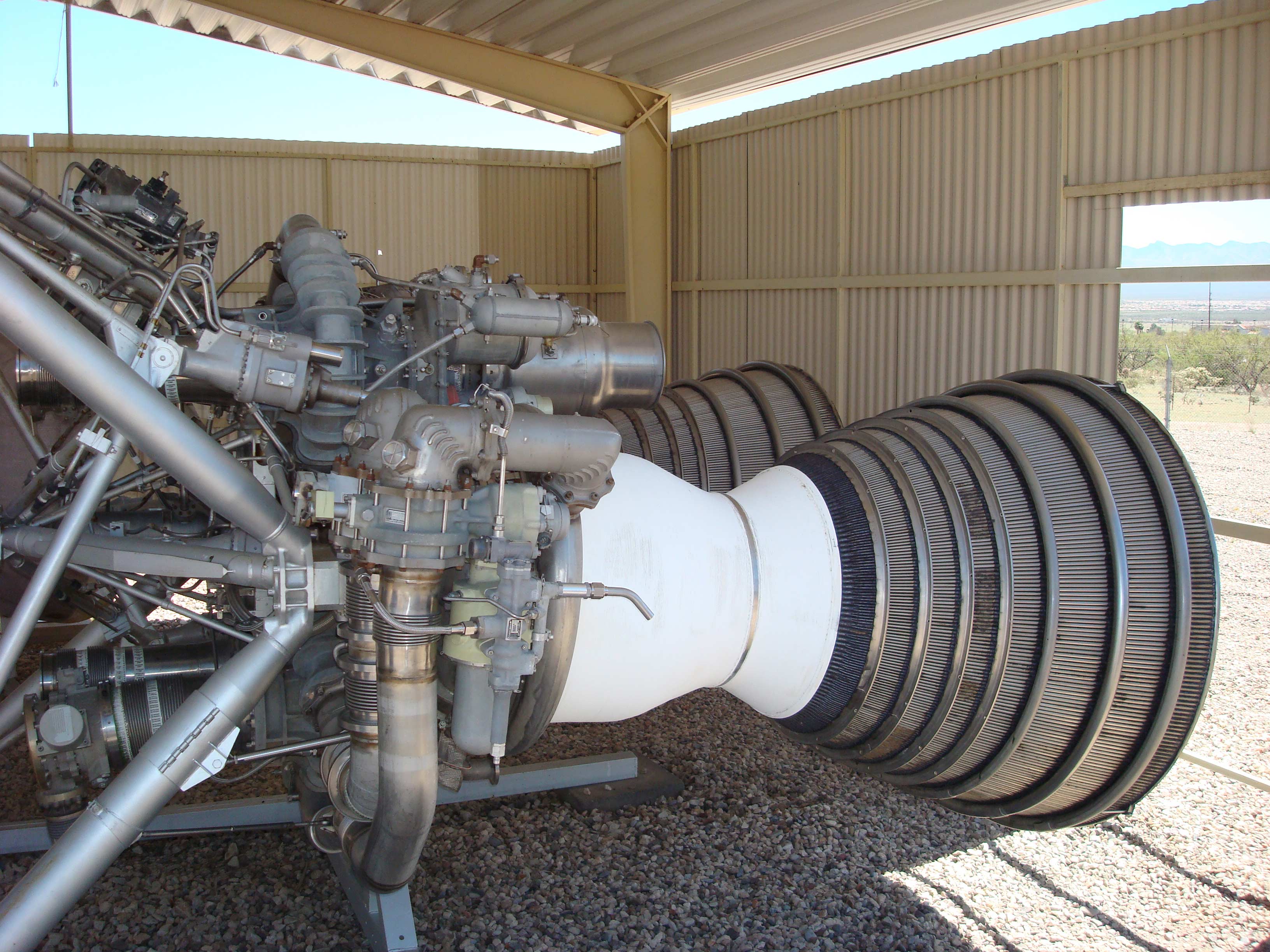 |
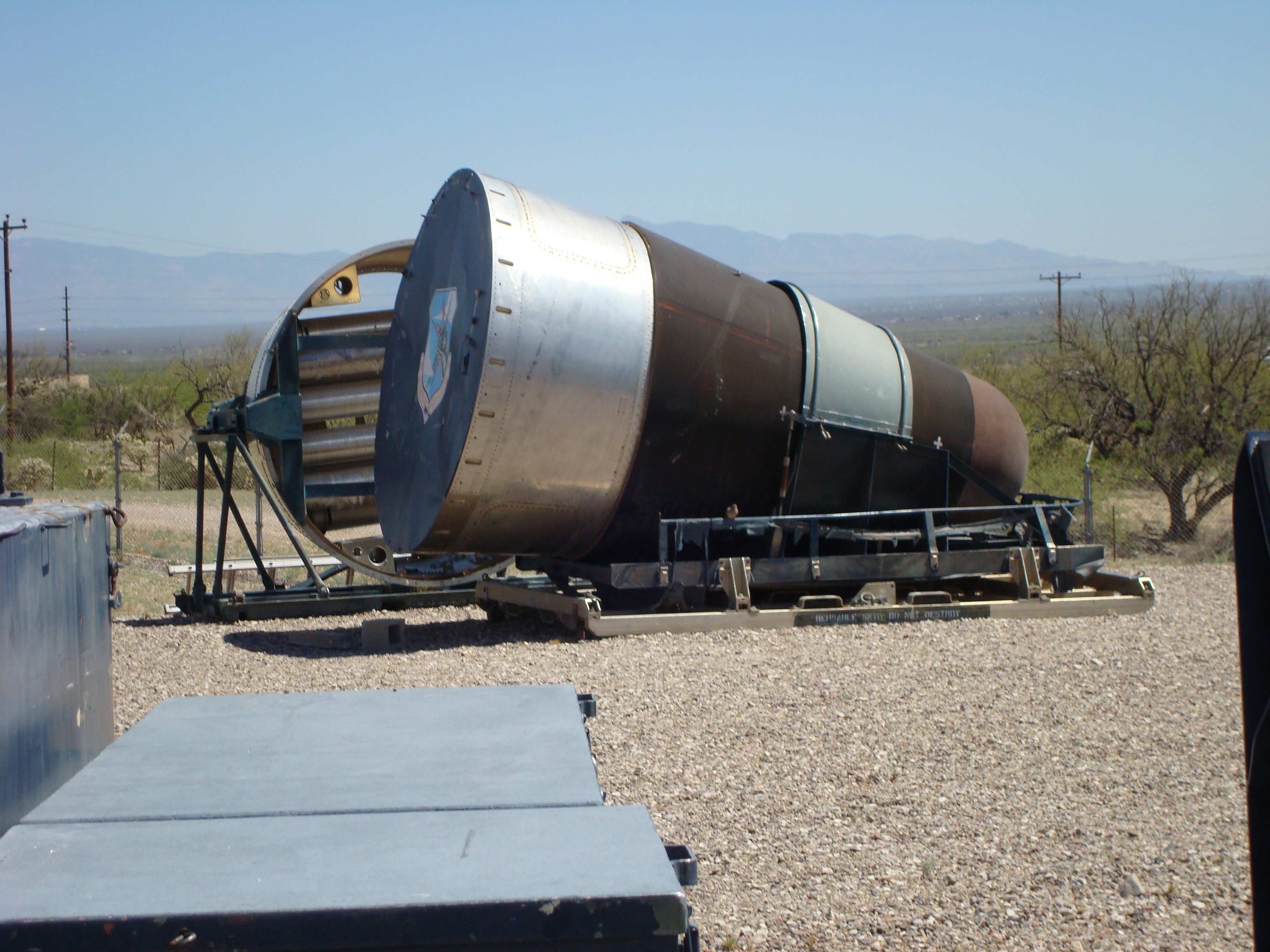 |
| Mt.
Lemon The cover to the silo is poured, reinforced concrete mounted on some hydaulic rollers. Some serious weight there. The blast doors were built to withstand a nearby nuclear blast. The cover is permanently positioned half-way open so that the russians can continue to verify the silo status via satellite imaging. Looking down from the surface through the blast door. |
Mt.
Lemon Here is the silo with the concrete cap. |
Mt.
Lemon Here we are in the command room. Right in front of the guide is the commander's console. Off to his right on the edge of the electronics rack is the desk for the other launch officer. They used what is called Two-Man Control. If a launch message came to them, they would each decode the message then compare to see if they decoded it correctly. if it was a valid message the would then crack open the "Cookie" - a credit card sized card that you would snap in half to reveal the actual launch authorization. They would then program the three assigned target coordinates. When all that was done and it was time to launch they each had a key to turn at the same time. The keys were located far enough apart that they could not be turned at the same time by only one person. Back when I flew the F-106 we used the same "Cookie" authentication system to launch the AIR-2A (Genie). A nuclear tipped tactical nuclear rocket. This room brought back a lot of memories from my days working in the Command Post during my early Air Guard days. The guide/docent actually worked in this silo as a launch officer. |
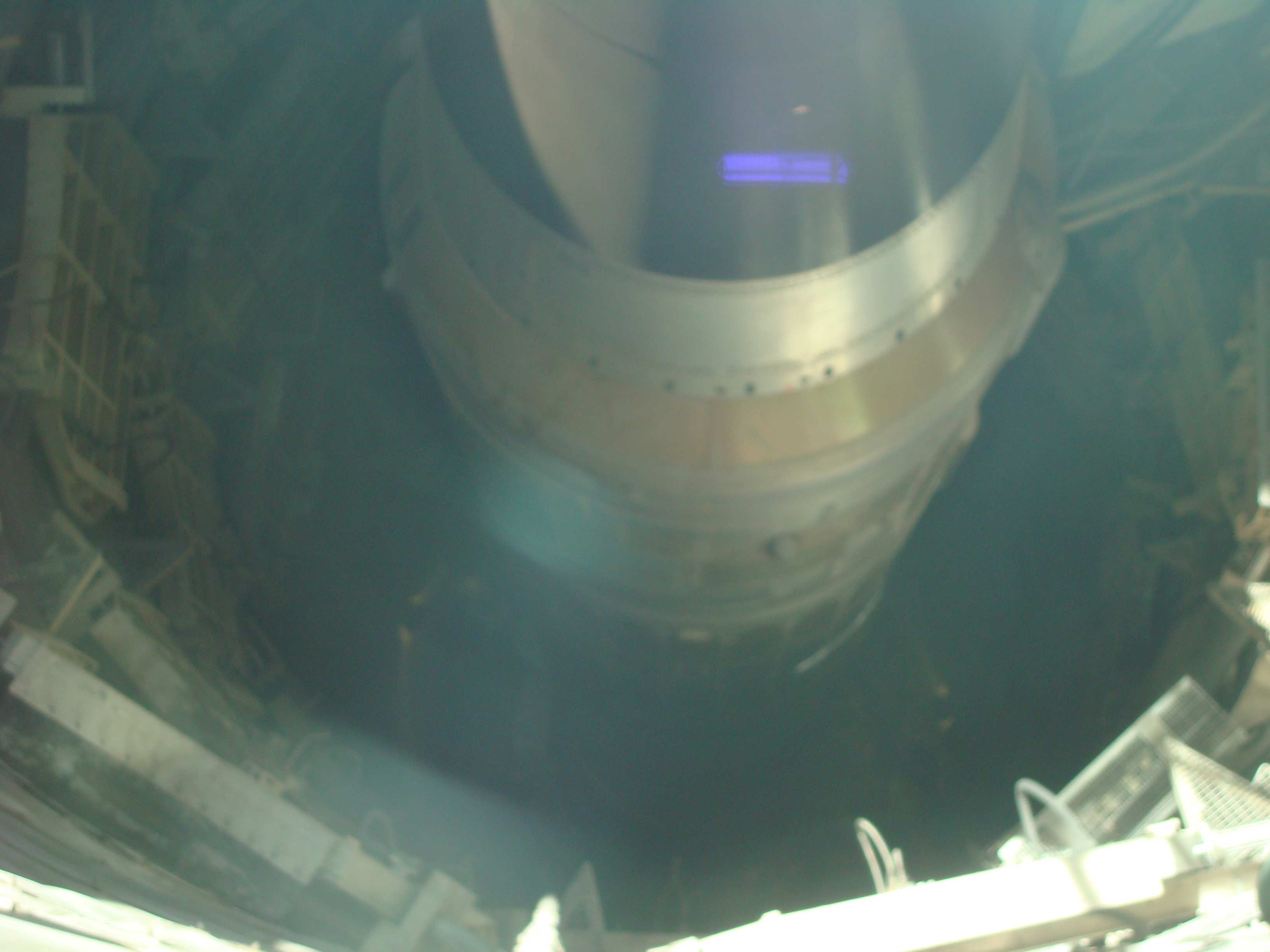 |
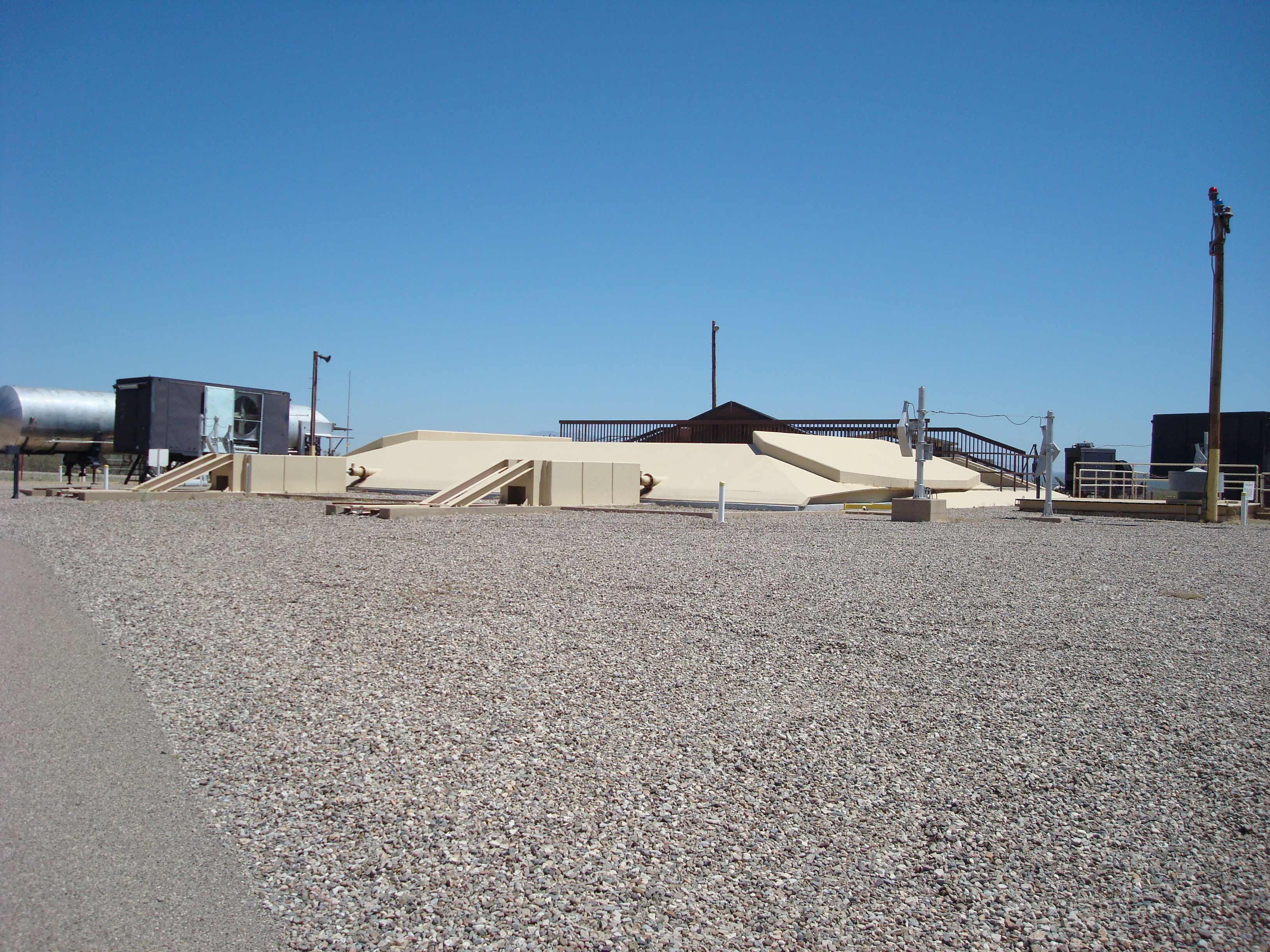 |
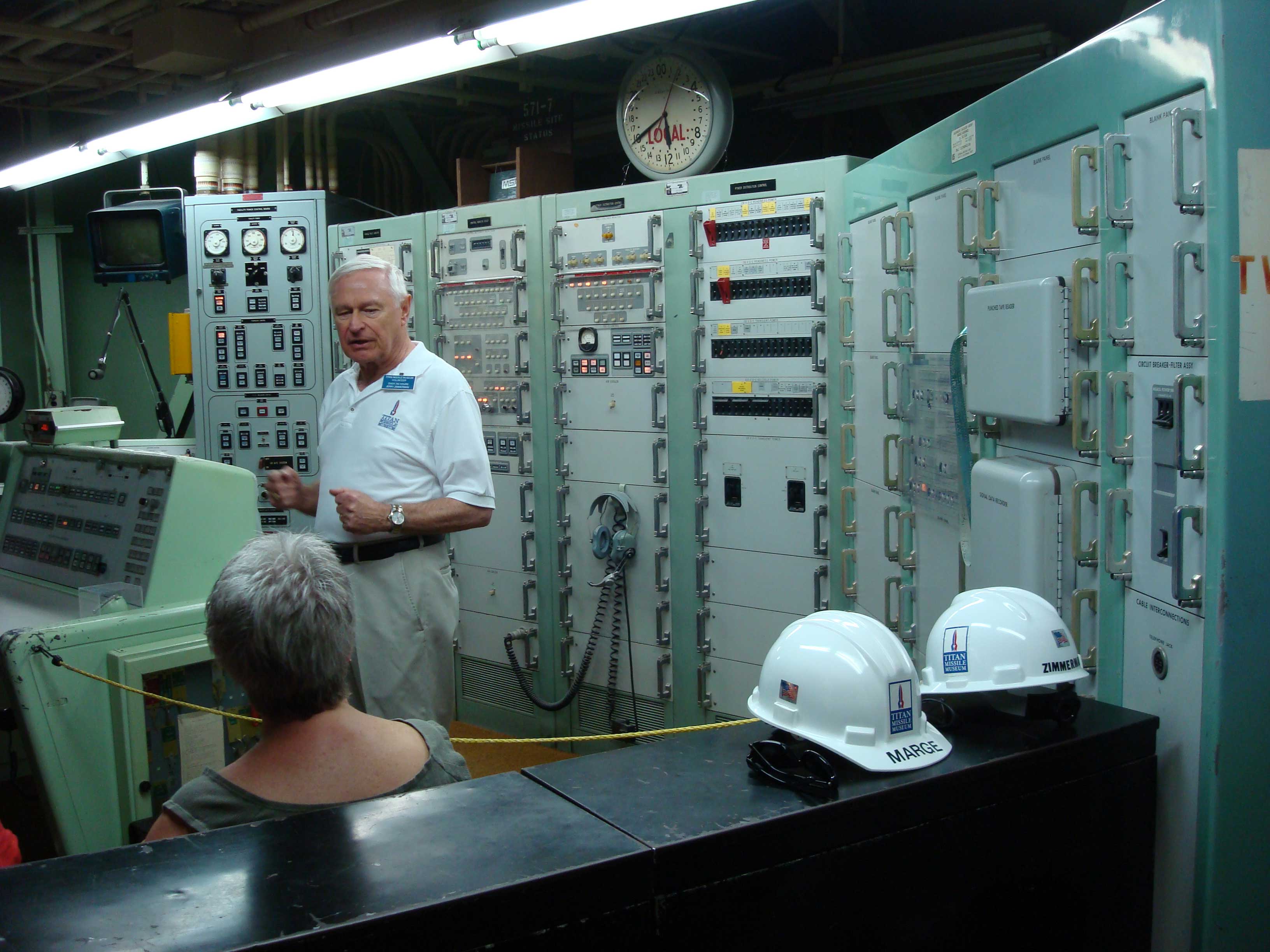 |
| Mt.
Lemon Another view of the Launch Commander's console. |
Mt.
Lemon The entire underground complex was built on giant springs to absorb the shock of a nuclear explosion without suffering any structural damage to the facility. |
Mt.
Lemon Looking through a viewing window. This missile and silo were featured in the Star Trek: Next Generation film First Contact. |
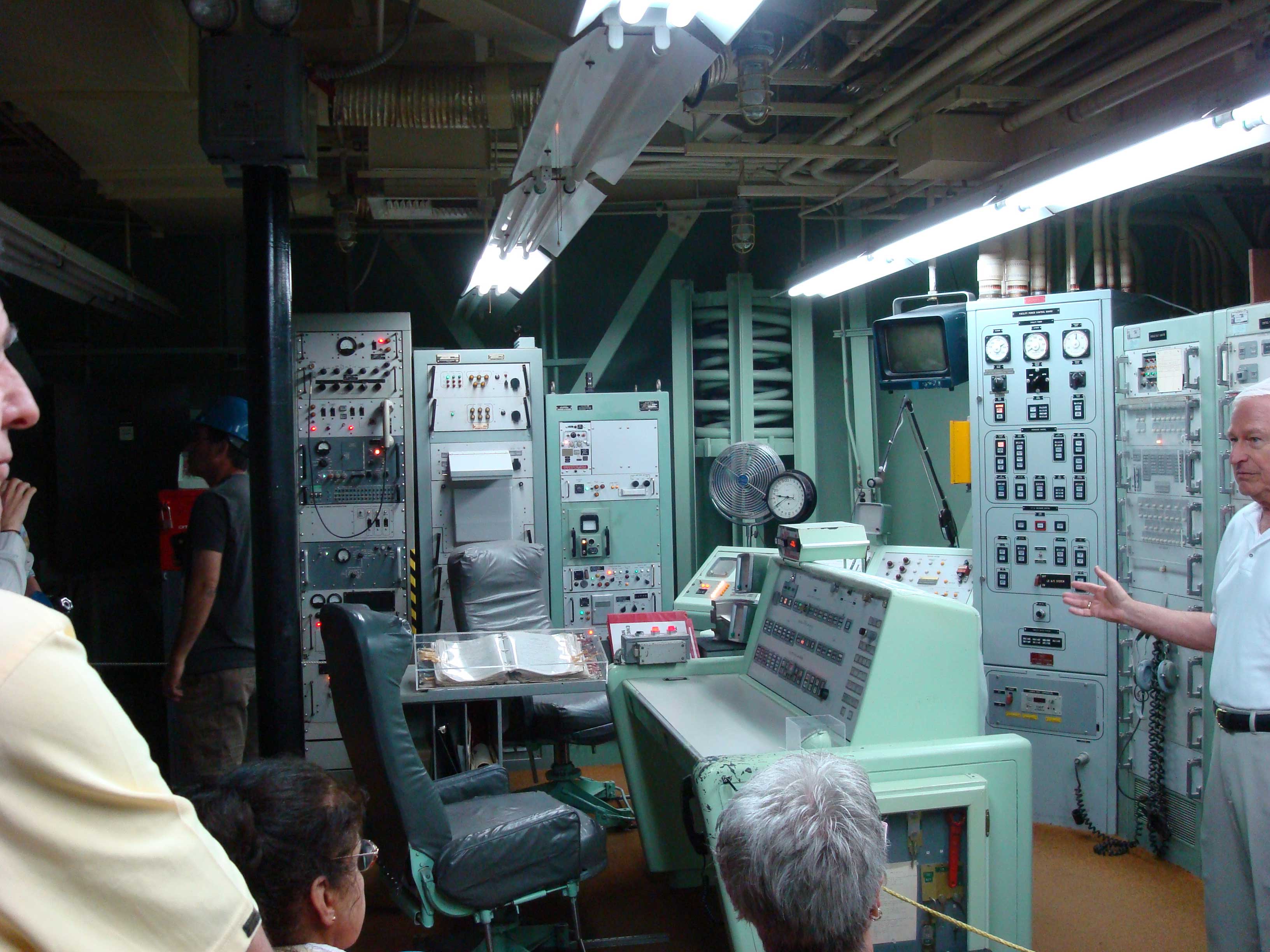 |
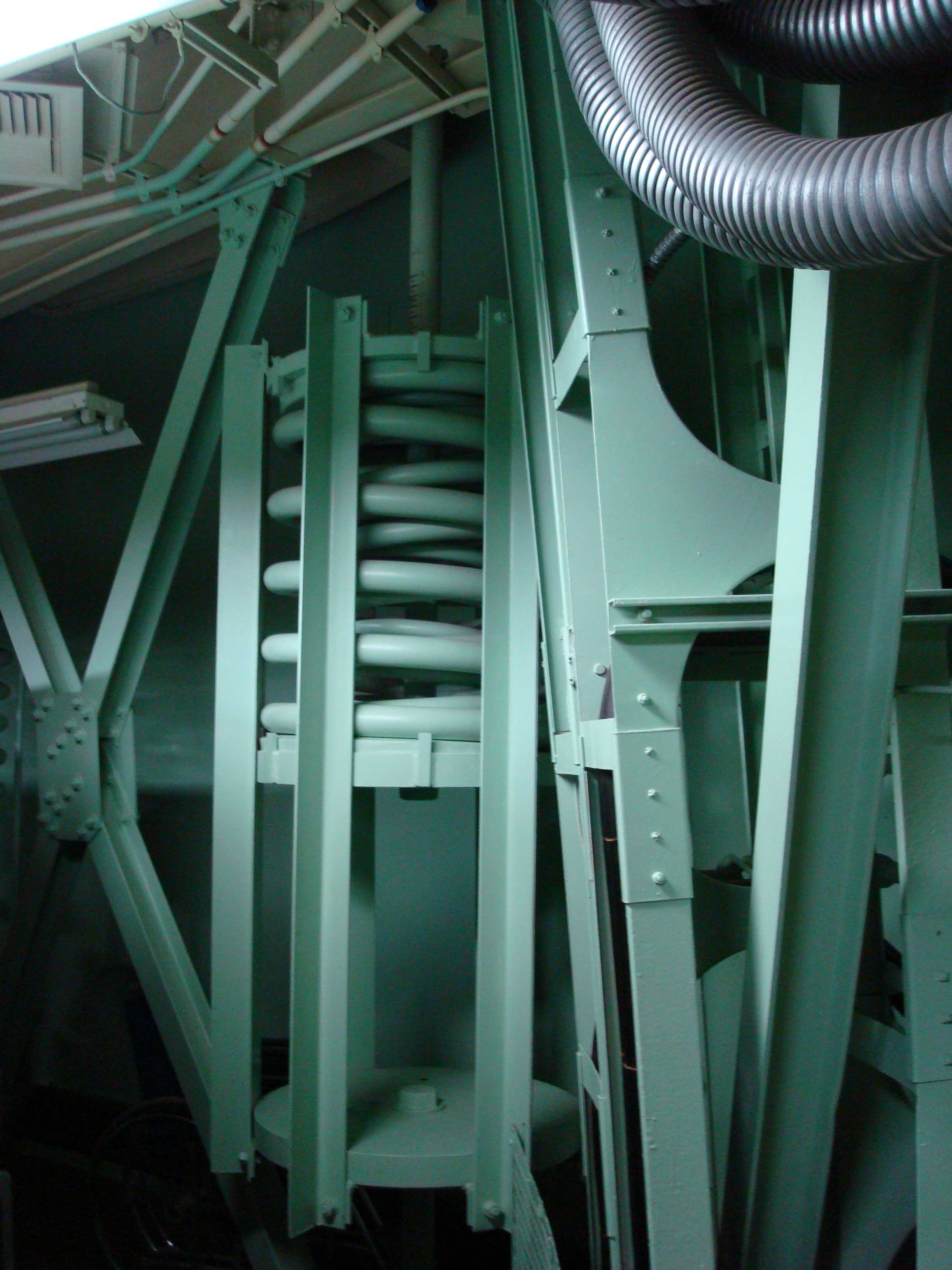 |
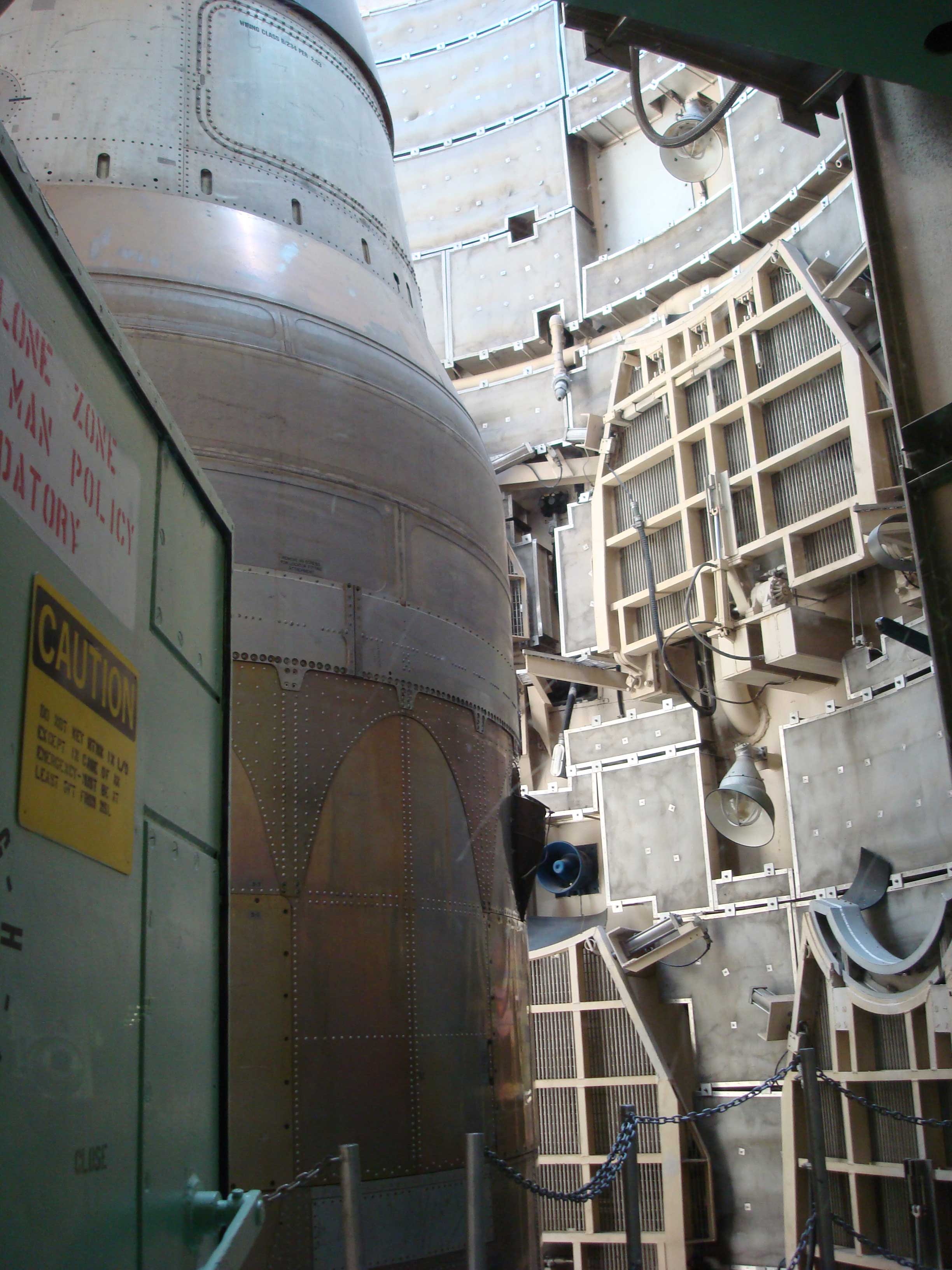 |
| Mt.
Lemon The Titan II was used for the manned Gemini space program. Can you imagine sitting in a capsule on top of one of these? Rockets had a tendency to blow up during or right after launch. Those guys had a ton of courage!!! |
Mt.
Lemon These are access panels that fold down from the wall to give access to various missile panels for maintenance. They were normally kept in the up position so the missile was always "On Alert." |
Mt.
Lemon There are a couple of these doors throughout the complex. They weigh somewhere around 10-12 tons each. Once they close, those big shafts extend and act like a giant dowel to lock the door in place. No one gets in or out without the proper autorization. |
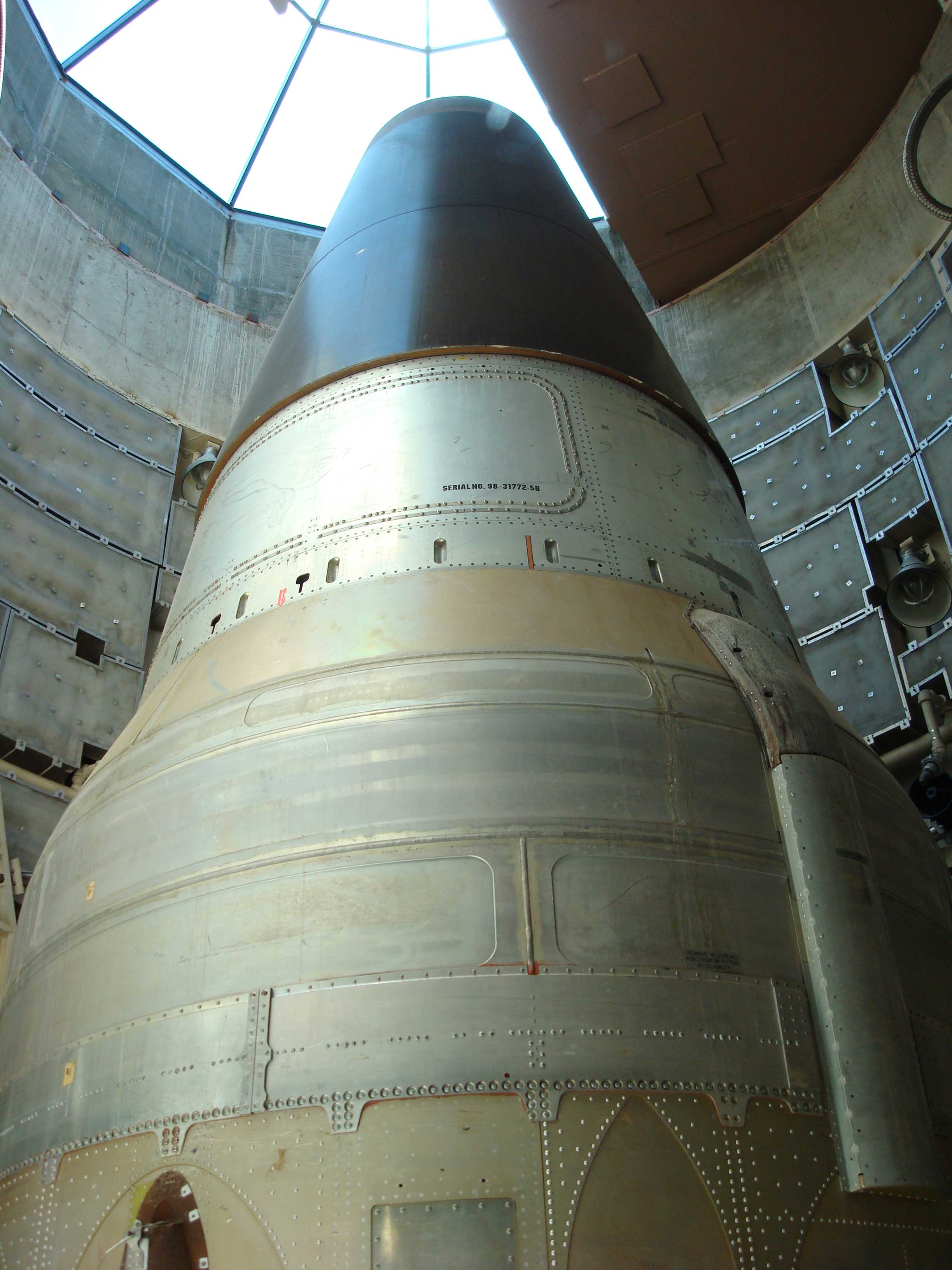 |
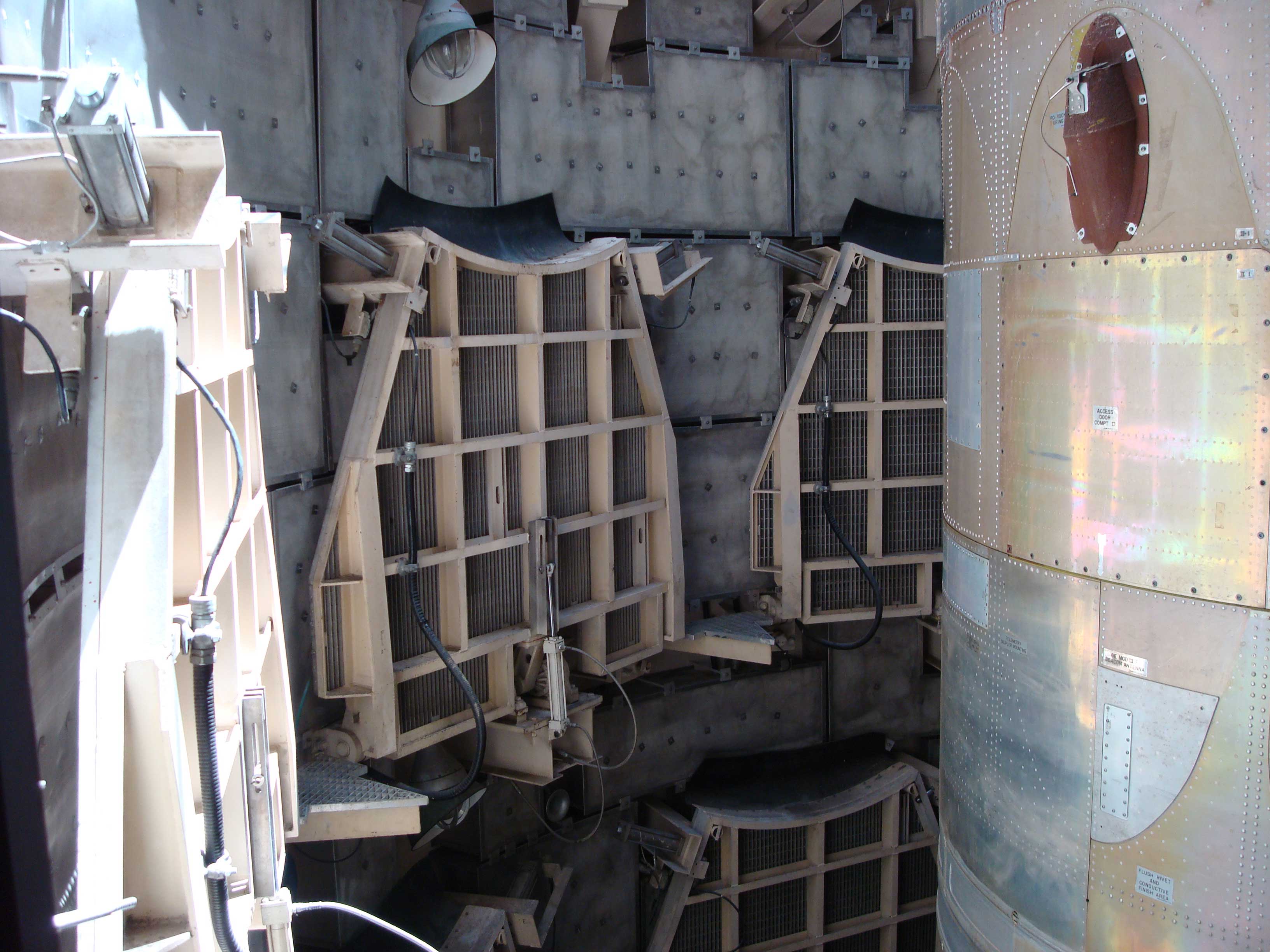 |
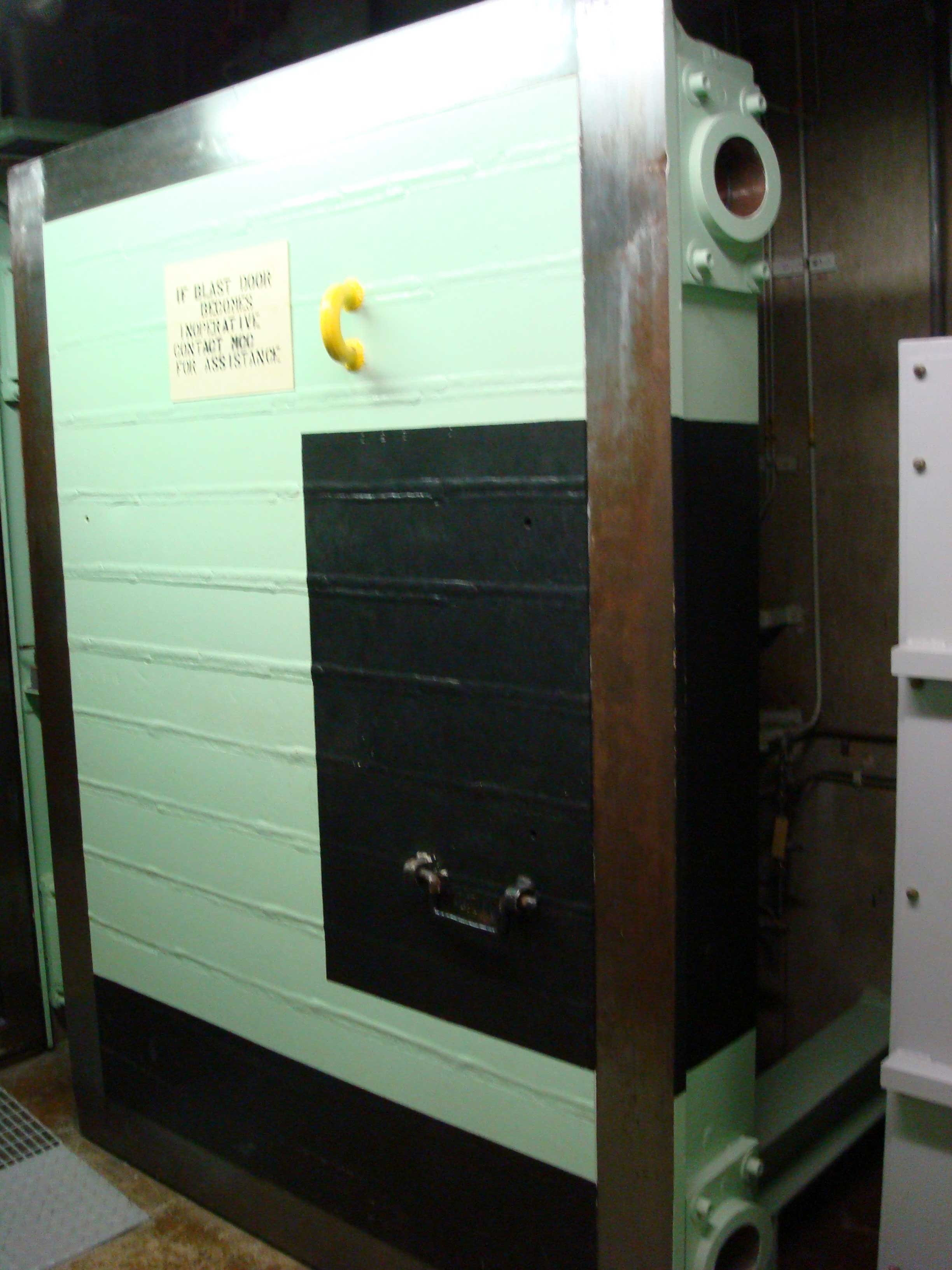 |
| Mt.
Lemon This is the hinge of the doors that isolate the outside world from the undergound launch complex. There are also doors like this at the silo and the command center. Even though these doors weight several tons they're balanced so you can open and close them using just fingertip pressure. |
Mt.
Lemon One more shot of the door. I guess I was really impressed by them since I took a bunch of pictures of them. |
Mt.
Lemon We finally headed up the mountain to Adam Blocks' observatory. Actually he works in conjunction with the University of Arizona. There are actually a number of different observatories on the mountain. Here is Fred as we're getting ready for our first night of imaging. |
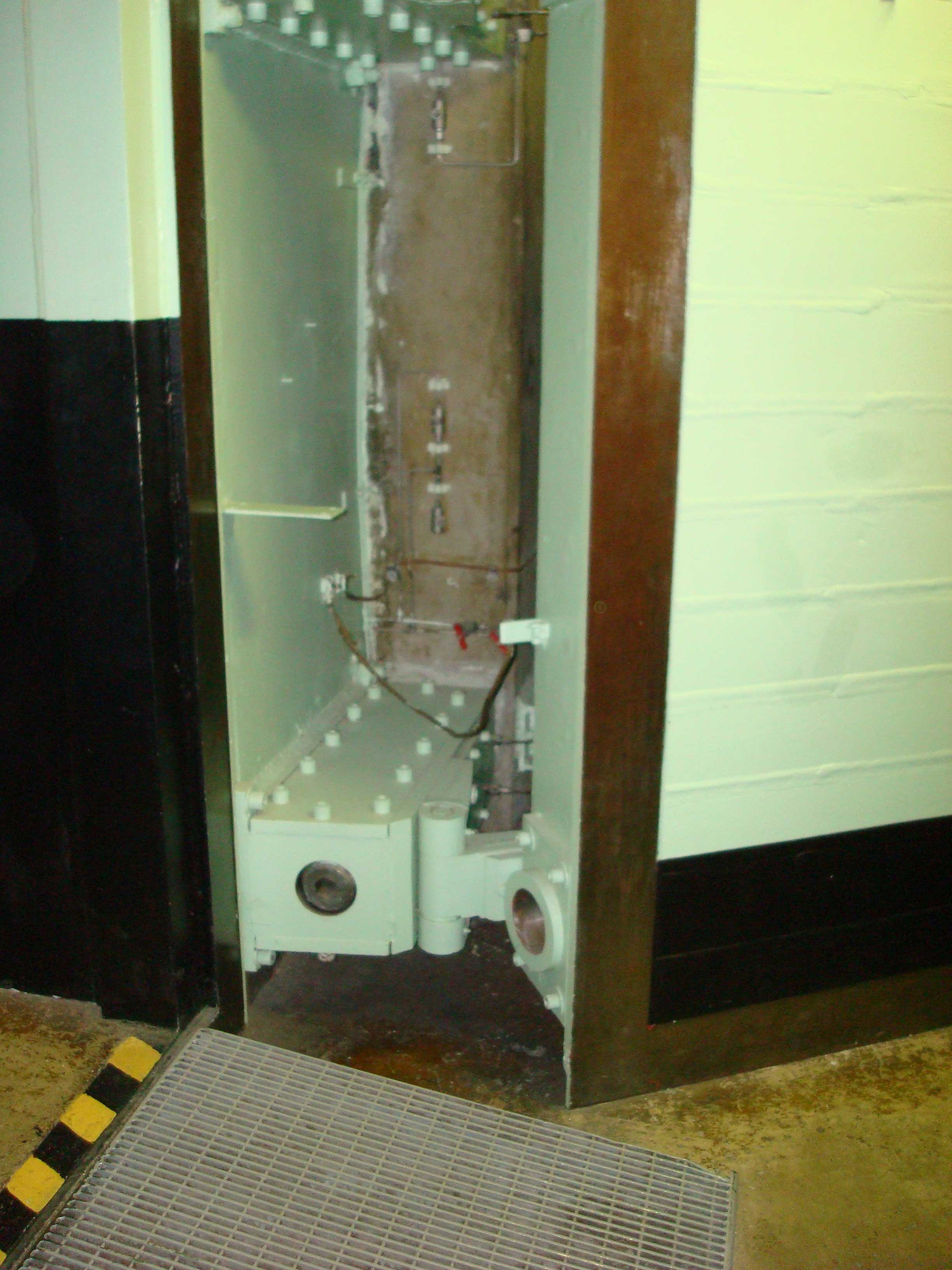 |
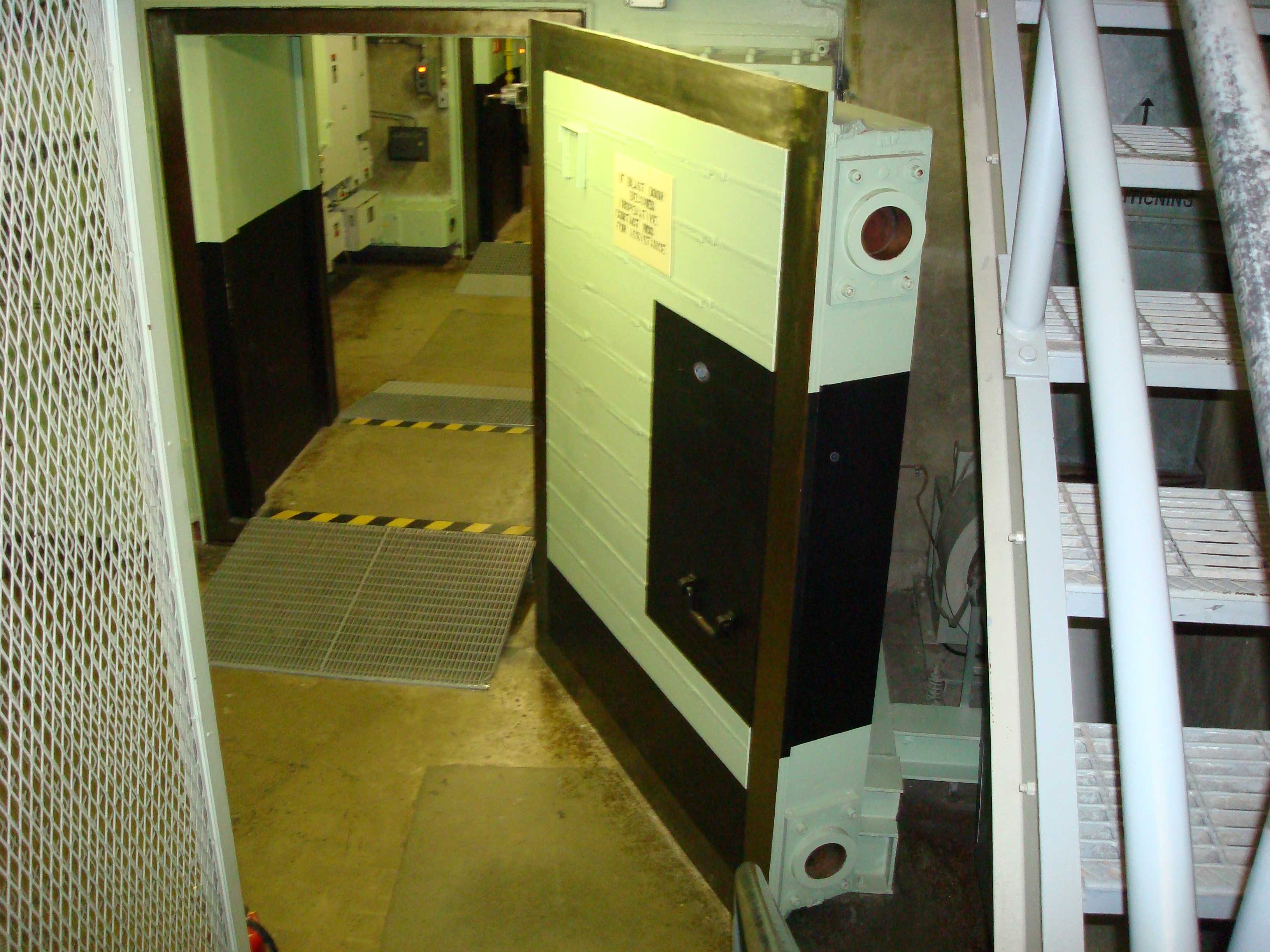 |
 |
| Mt.
Lemon Adam up on the ladder openin up the observatory door for the telescope. |
Mt.
Lemon Me and Adam in front of his 24" reflector. |
Mt.
Lemon Fred and Adam. Just to the right of the cabinet is the sheet Adam uses for taking his flat field images (used for processing the light images). |
 |
 |
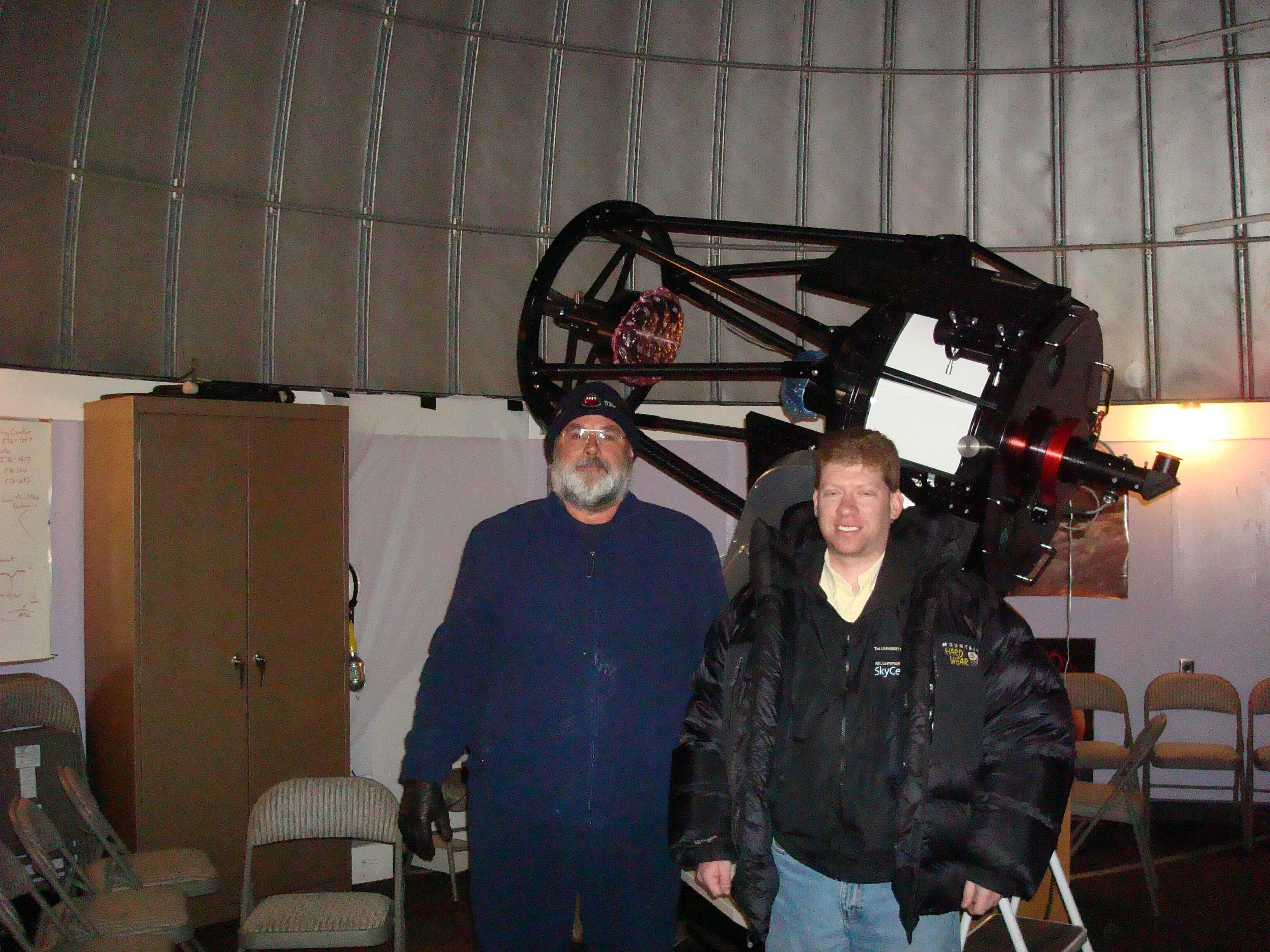 |
| Mt.
Lemon Just after sunset with the observatory door open. The nights up there were brutally cold. The first night the wind was clipping along at about 25 kts. We went outside a couple of time to stay awake and the temperature was down around 30 degrees. The dome does a great job of protecting the telescope from vibrations caused by the wind. After the second night Fred and I were pretty punchy. We just can't pull all-nighters anymore :) |
Mt.
Lemon Adam had had some other visitors for a visual observing session and had to put the SBIG camera back on the scope. |
Mt.
Lemon We stayed in a fantastic dorm where visiting astronomers stay. This is the kitchen. Very modern and clean. |
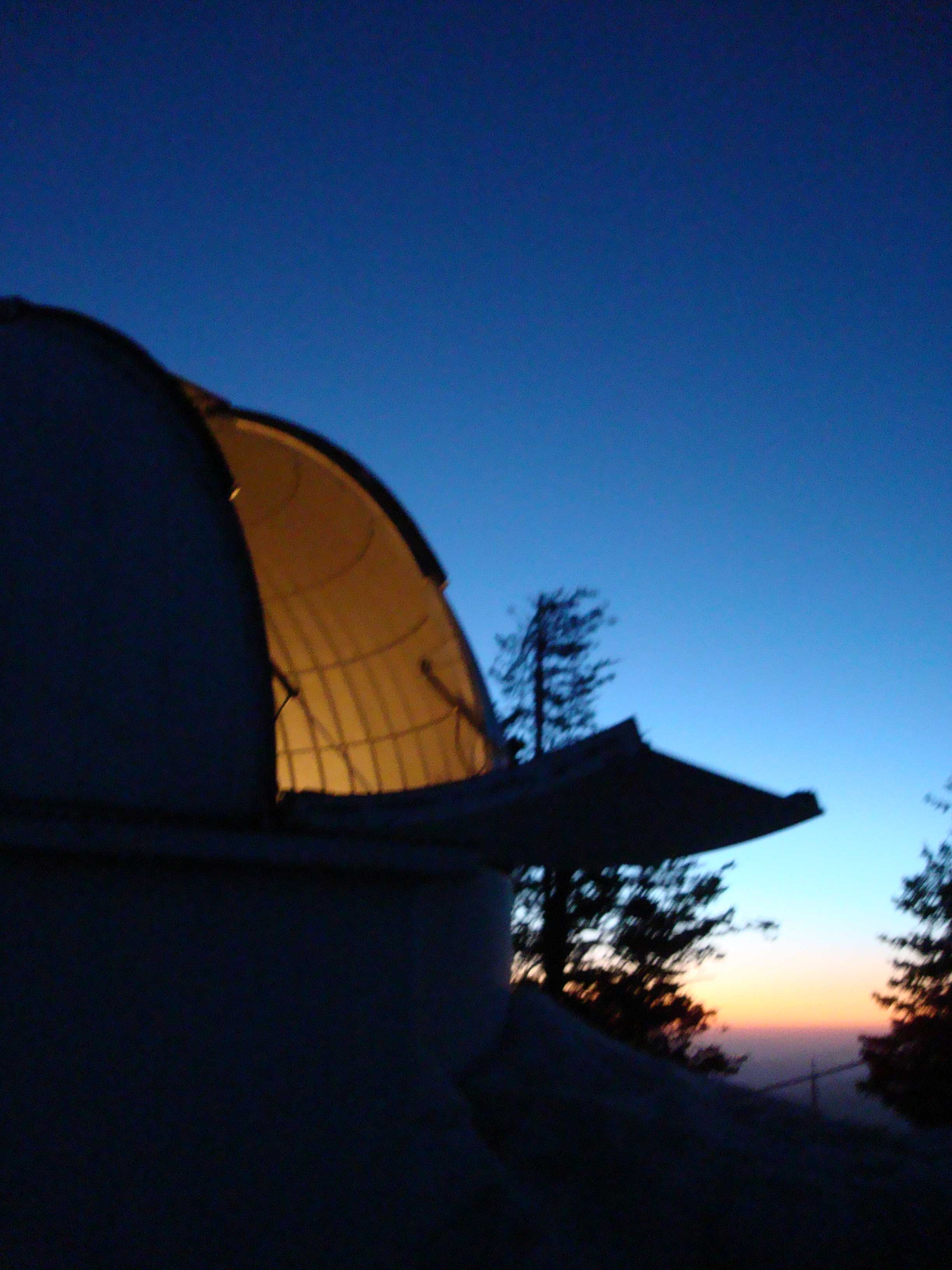 |
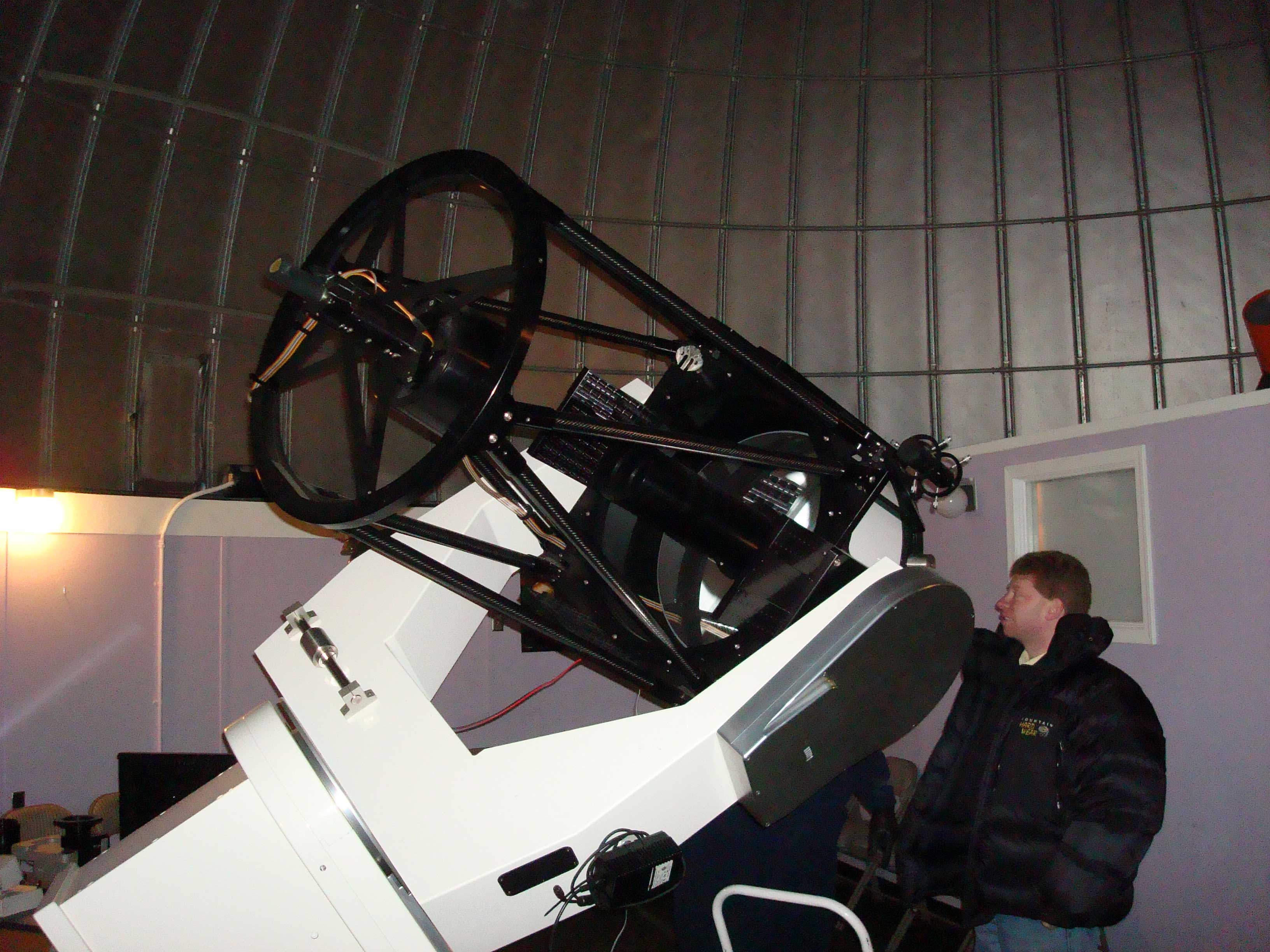 |
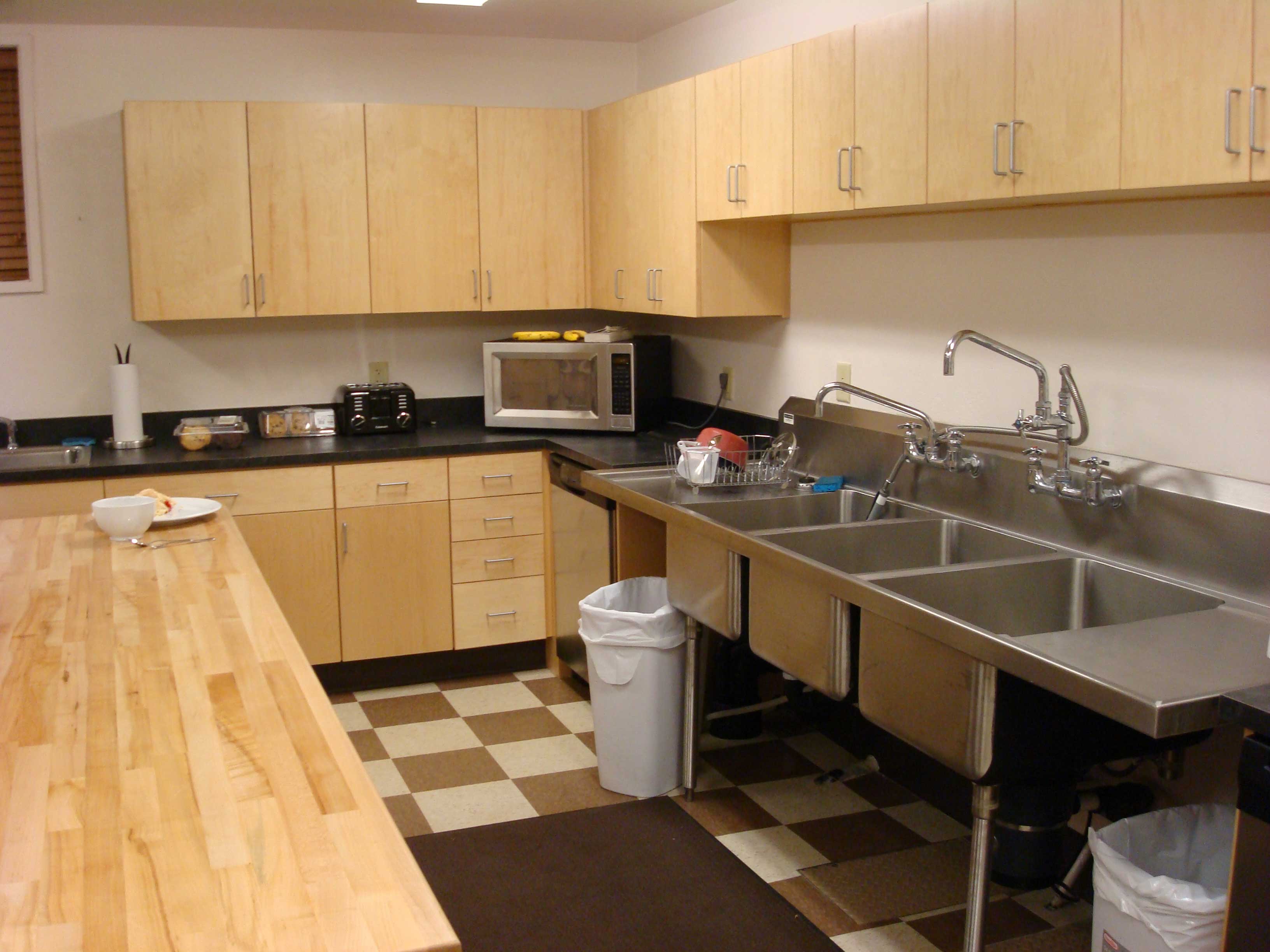 |
| Mt.
Lemon The other side of the kitchen. We had to bring our own food so Fred and I stopped at a grocery store just before we came up the mountain. |
Mt.
Lemon The hallway leading to the bedrooms. |
Mt.
Lemon Fred and I each had our own room even though they were designed for two people per room. The beds were very comfortable. |
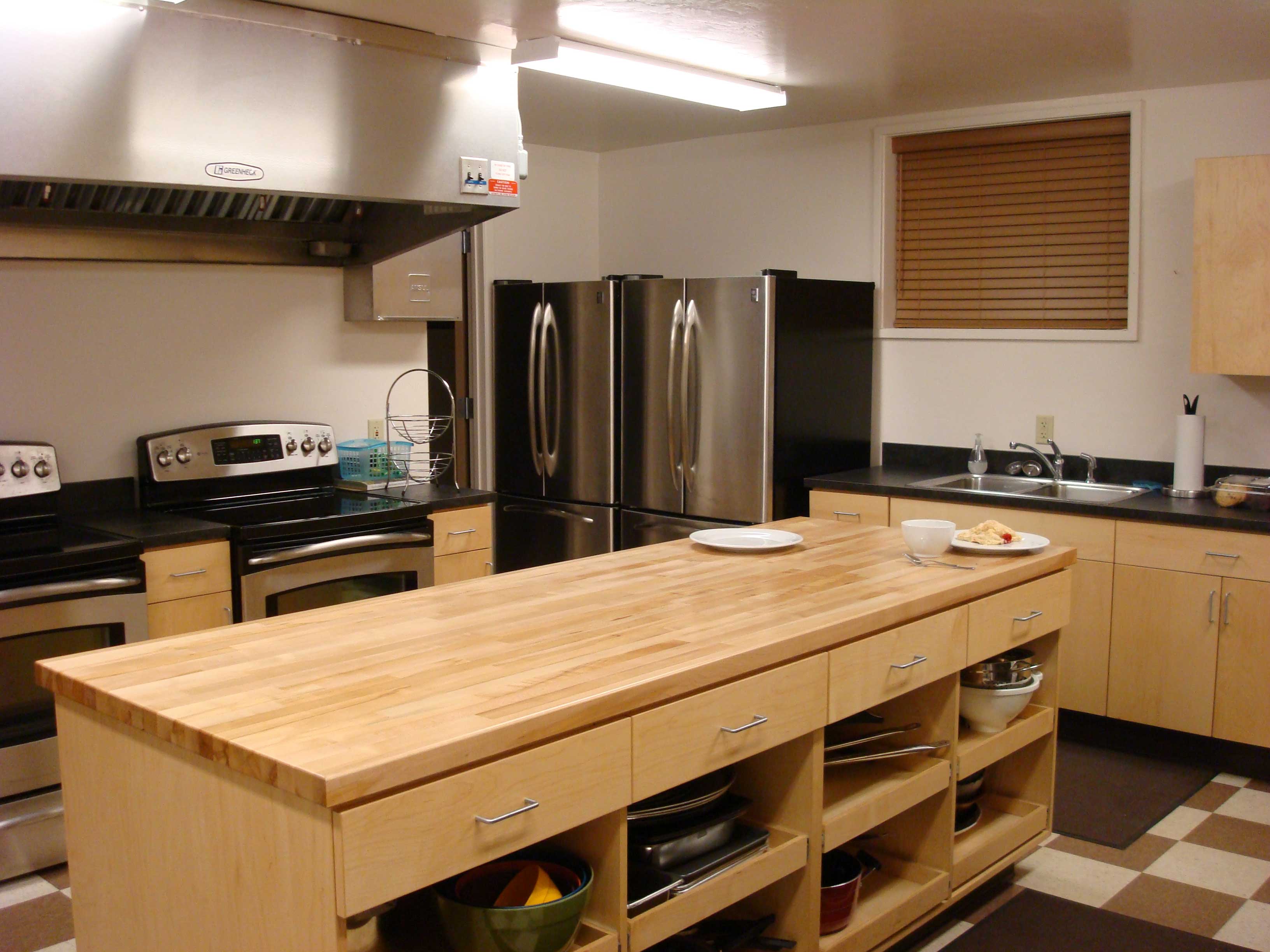 |
 |
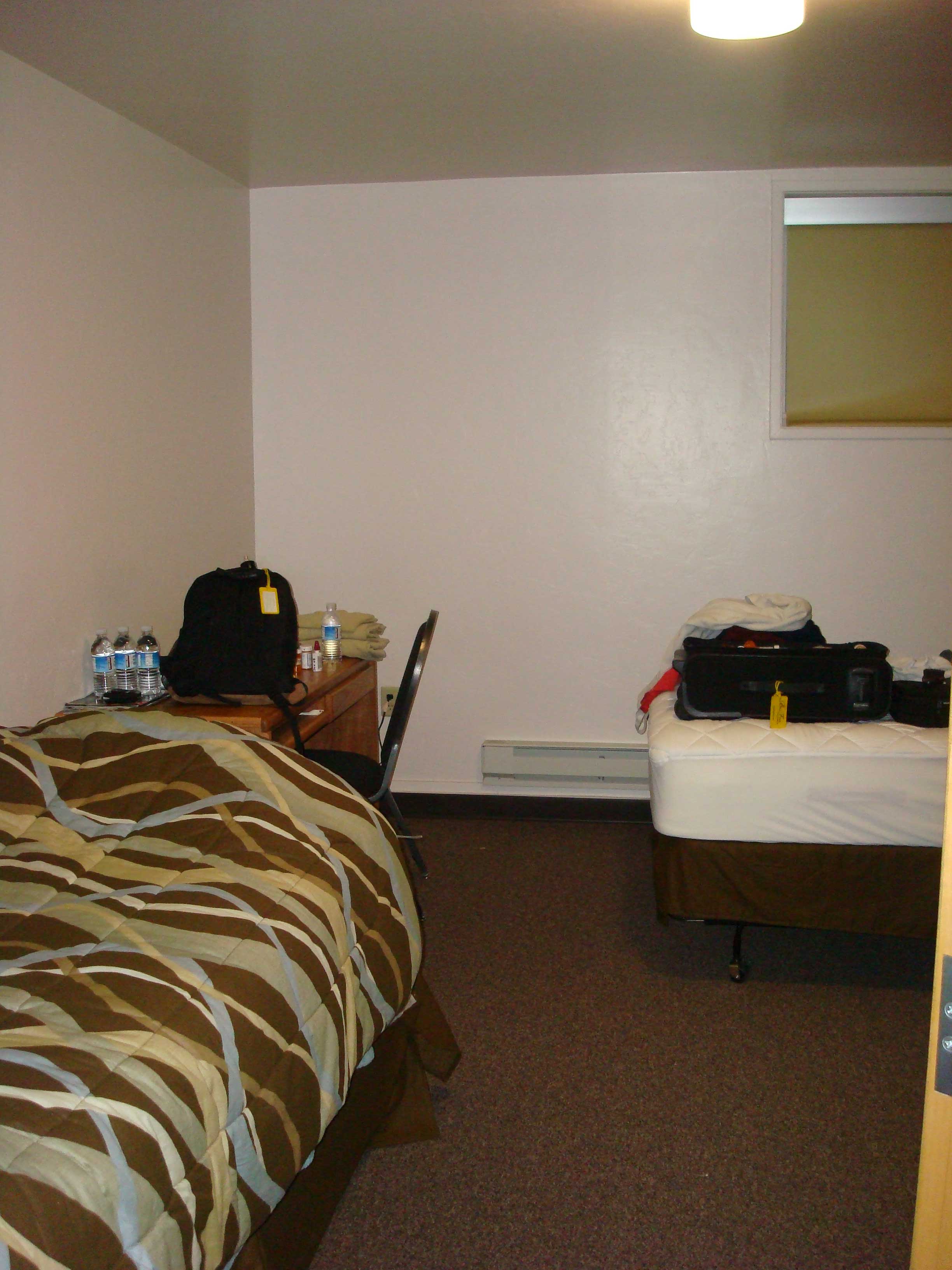 |
| Mt.
Lemon The observatory sits just shy of 10,000 feet. It was April and there was still snow on the ground and a chill in the air. This is one corner of our dorm. |
Mt.
Lemon The road coming down from the observatory to the dorm building. |
Mt.
Lemon This is the observatory that we used with Adam. Across the street there is a scope that is used remotely from south Korea. Also there is an observatory that does nothing but look for Near Earth Objects (NEOs). A fellow takes a couple of ten minute images of an area of sky then compares the two to see if anything moved. If an asteroid is observed he inputs the coordinates into a database to see if it is already known or a new one. Either way, it can then be tracked and it's orbit determined accurately to see if it poses a threat to the earth. |
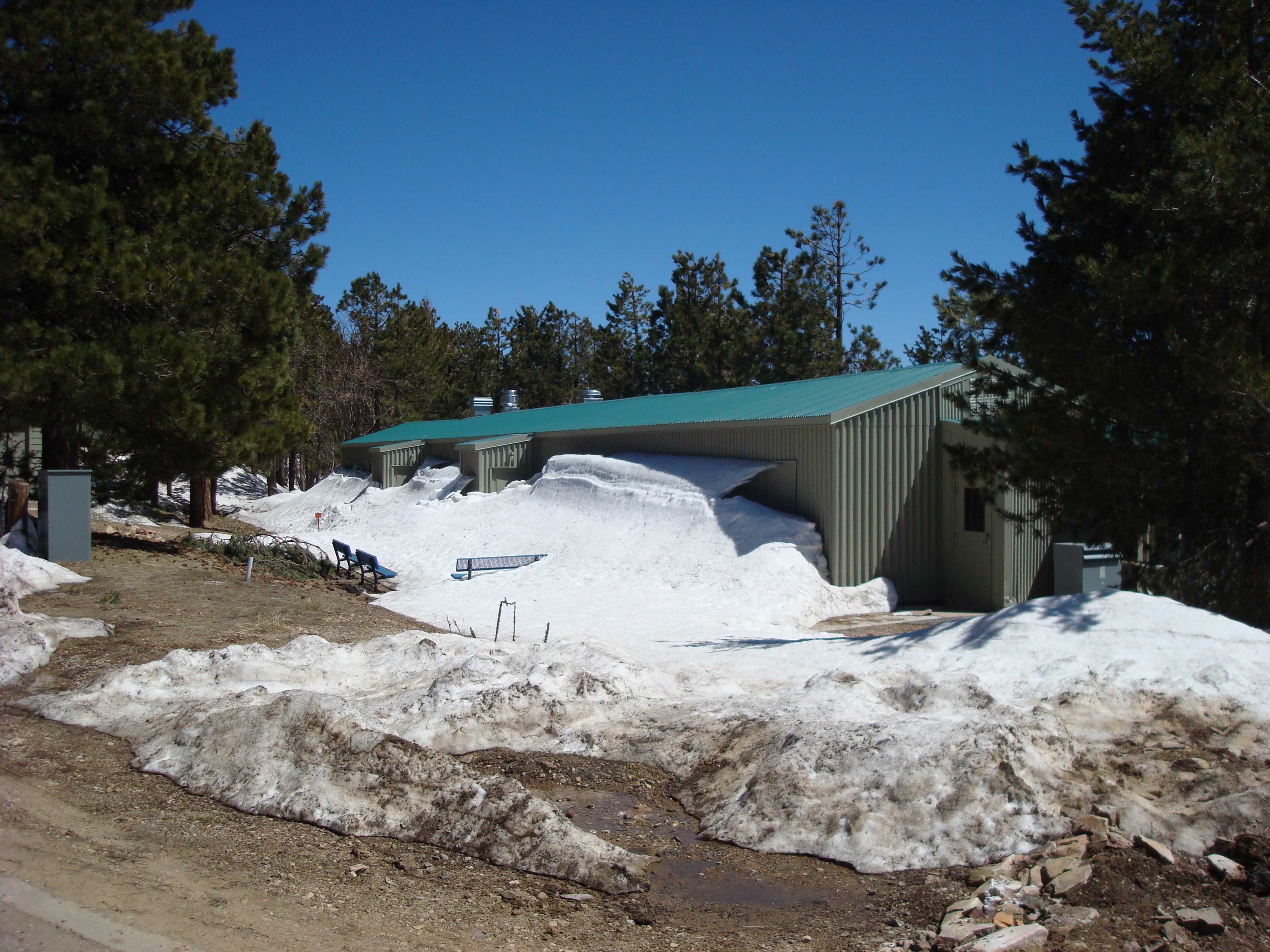 |
 |
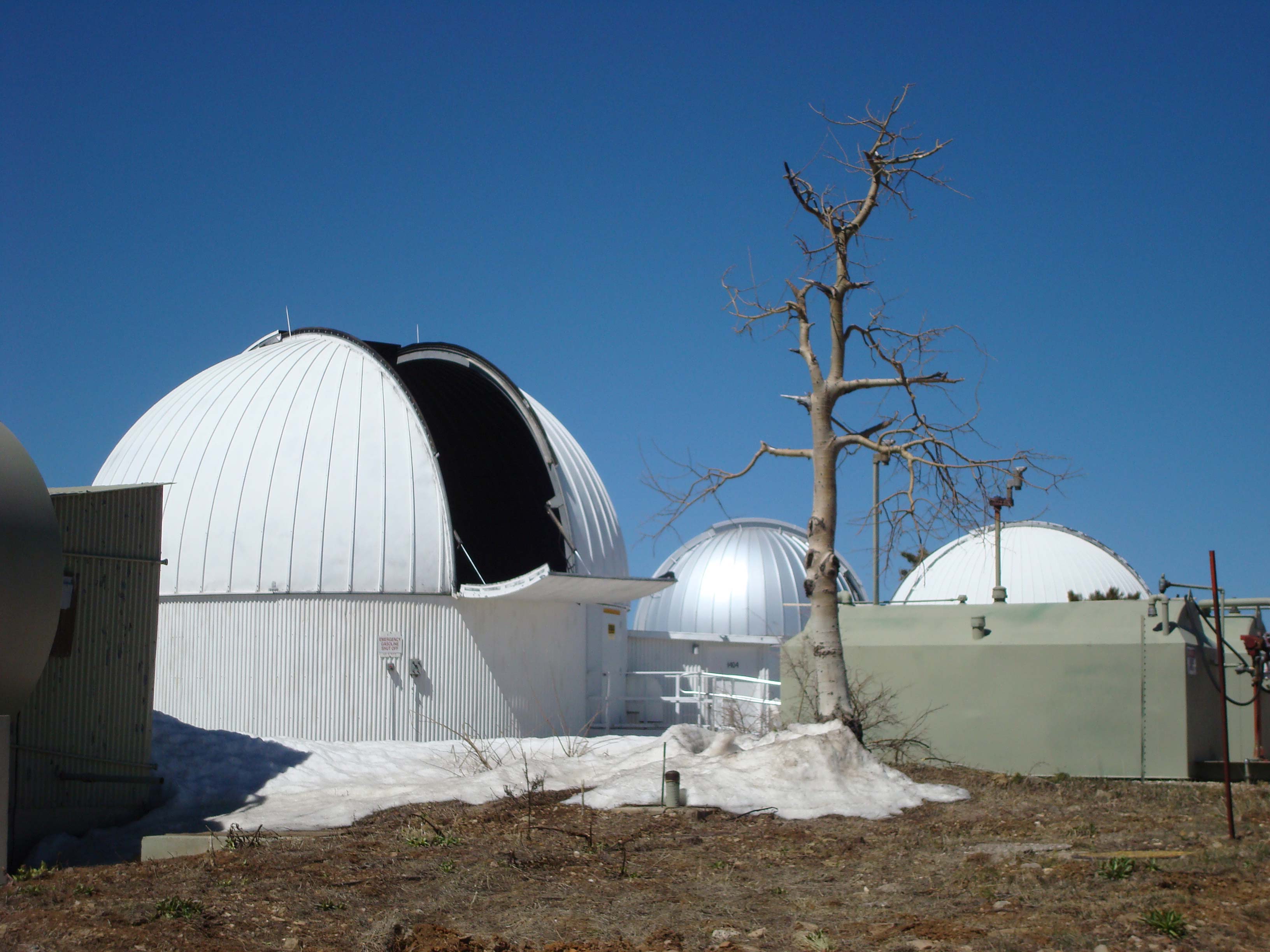 |
| Mt.
Lemon The whte dome in the center is the one used by the South Koreans. The one in the distance is the one used to detect NEOs. The one on the right was not being used when we were there. |
Mt.
Lemon Here's Fred on the afternoon after our first night of imaging. It was a long night and we got to bed around 6:00 A.M. Fred making some focusing adjustments on the solar scope. |
Mt.
Lemon Adam's 24" telescope. It has now been replaced with a 36" telescope. Adam doesn't do many all-nighters anymore either. His telescope is set up to be run remotely. You can sign up for telescope time, select and image your chosen object. The images are then sent to you so you can do your own processing. There are a lot of companies that do this all over the world. You rent time remotely and you can get images that you would never been able to get otherwise. Not cheap, though :) |
 |
 |
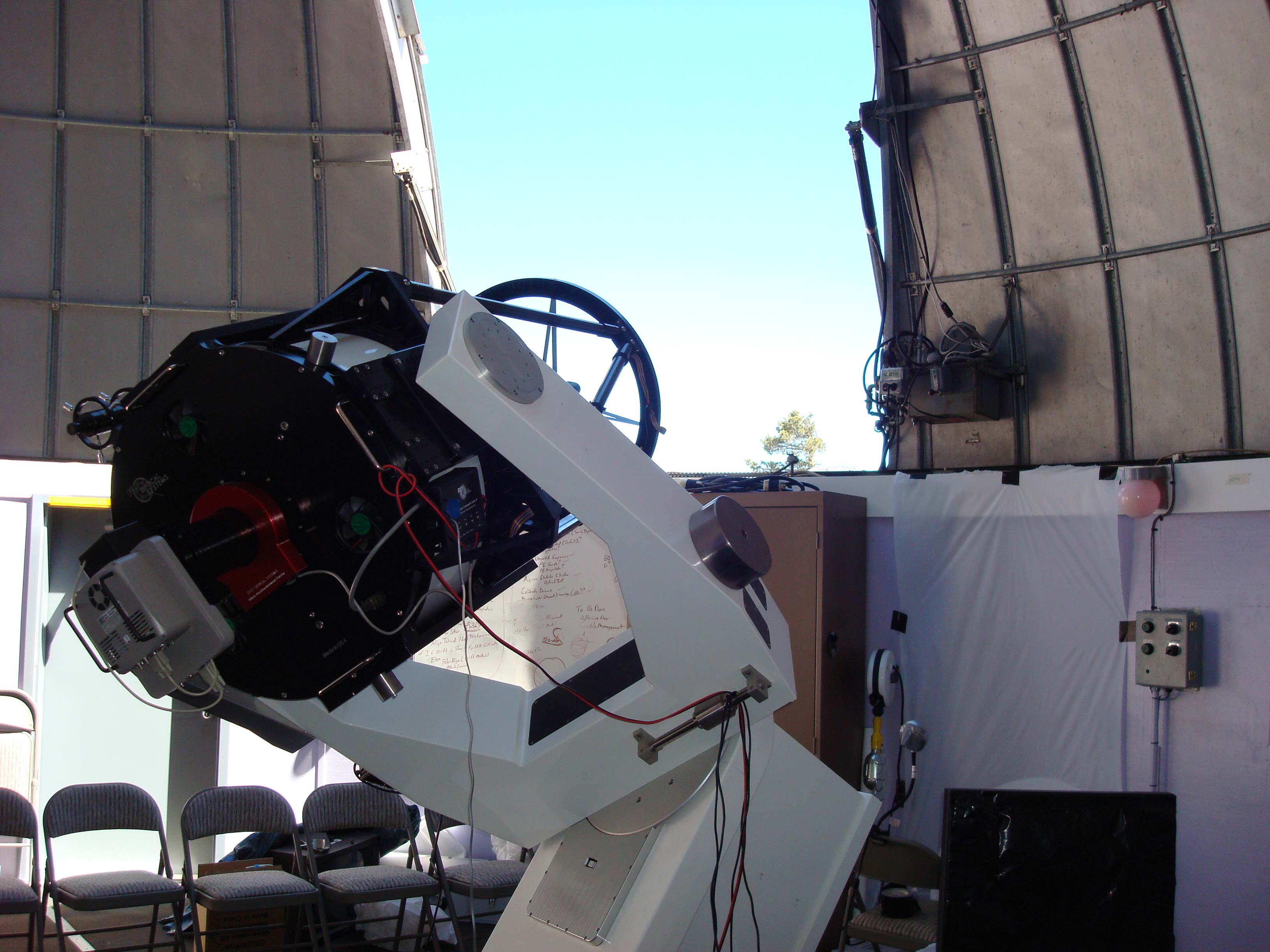 |
| Mt.
Lemon Adam getting the solar scope up and running. In the upper left of the monitor is a real-time image of the sun. He's working in the dome warm room, a seperate room inside the dome where you can sit and do all your imaging work without freezing to death in the middle of the night. |
Mt.
Lemon From the summit looking out toward Oro Valley just on the north side of Mt. Lemon. From Mt. Lemon you can also see Kitt Peak Observatory off to the west. |
Mt.
Lemon I like this picture a lot. A nice shot of an airliner flying overhead, taken through the dome door. I was still flying for American at the time. |
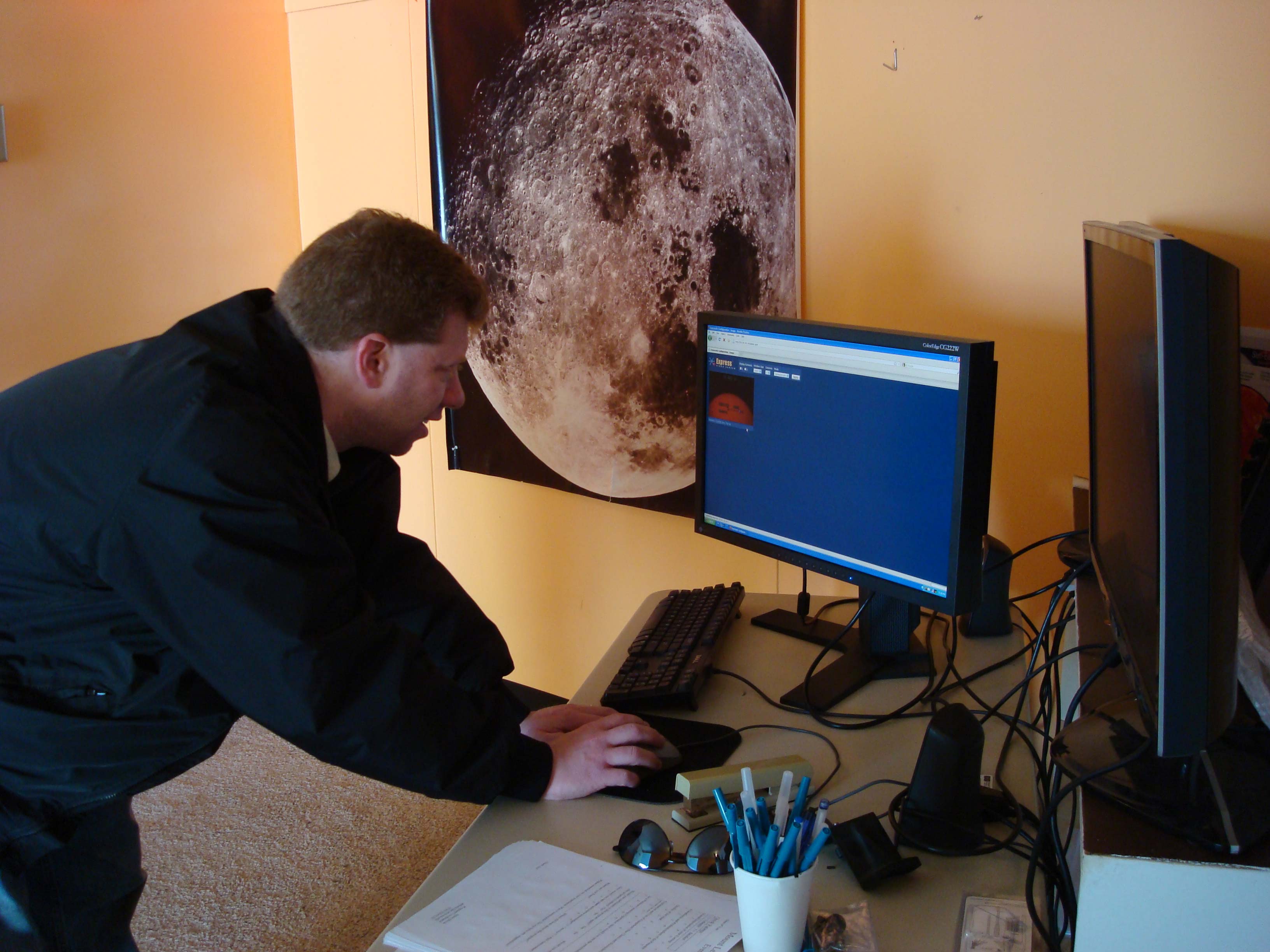 |
 |
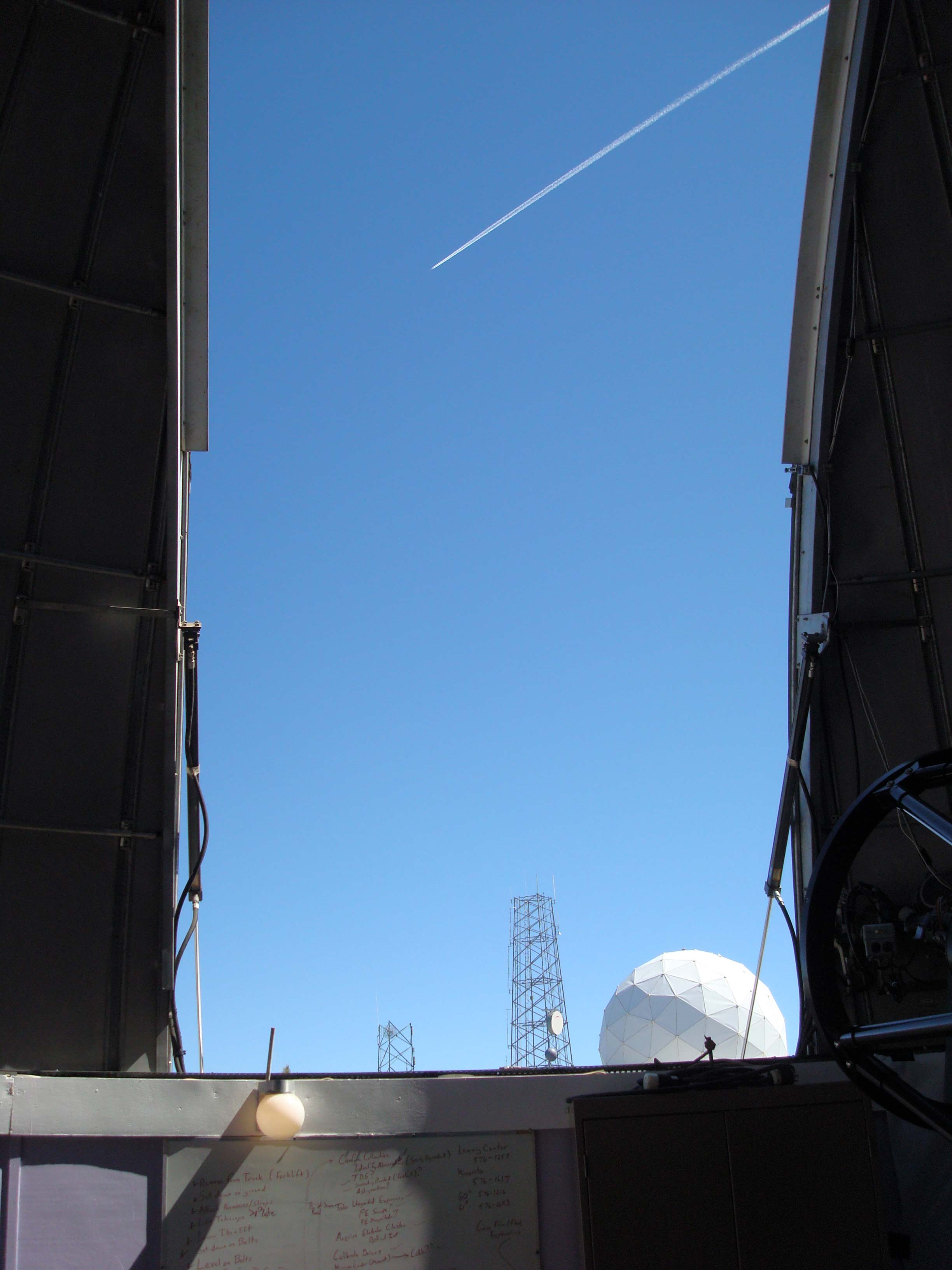 |